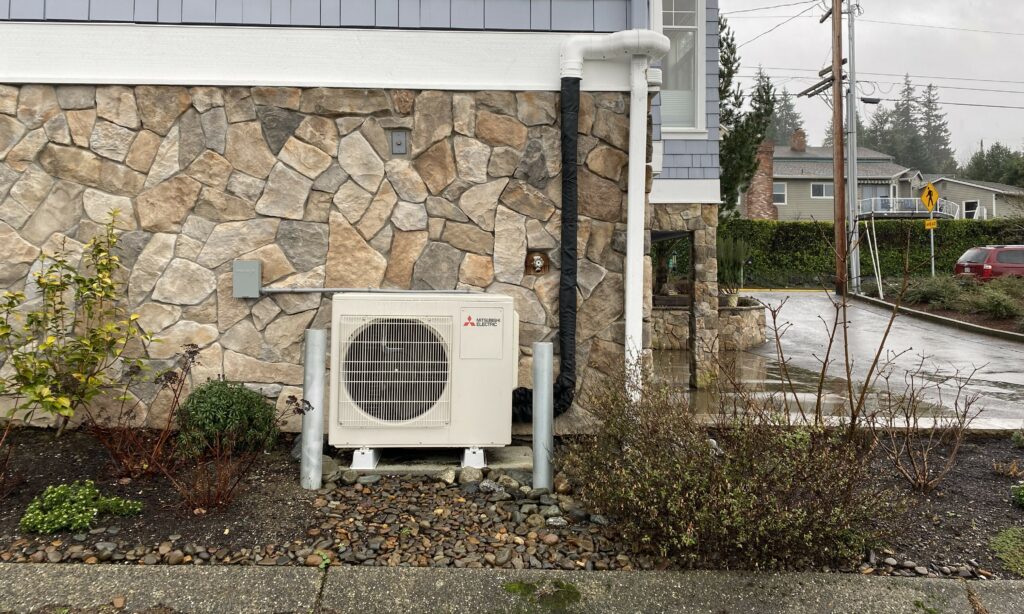
This election, Washington state chose to keep our Climate Commitment Act. That keeps us on track to stop most of our greenhouse gas pollution by 2050. I’m grateful. Countries around the world are joining with us in stopping global warming pollution, and we in Washington state are committed to doing our part.
Every three months, I share how things are going in stopping global warming pollution in Edmonds, Lynnwood, and Mountlake Terrace. Here’s an update for the third quarter (July-September) of this year.
New vehicle purchases
In the third quarter, 23% of new vehicle purchases in the Edmonds-Lynnwood-MLT area were electric cars and trucks, according to data from the Washington State Department of Licensing. That is a 23% annual growth since 2023.
In Washington sate overall, in the second quarter, 20% of new vehicle purchases were electric vehicles, up 14% over the third quarter of 2023.
Second quarter (April-June) included a drop in new electric vehicle purchasing. The drop happened statewide, and throughout the U.S. and Europe. Whatever that drop was, it turned around again by third quarter.
Vehicles on the road: vehicle registrations
Of the vehicles registered in Edmonds-Lynnwood-MLT, 3.3% are electric. You might see more on the road than that. Families who have registered both electric vehicles and gasoline vehicles often prefer to save money by leaving their gasoline cars and trucks at home as much as possible.
Used vehicle purchases
Electric vehicle purchasing in the used market in Edmonds-Lynnwood-MLT has reached 3%, just a little bit behind the portion of vehicles on the road that are electric.
The used electric vehicle market is limited by how recently electric vehicles have taken off. That’s why the portion is just like the portion of cars on the road rather than higher.
Natural gas
In 2017, about 60% of greenhouse gas emissions in Edmonds came from cars and trucks burning gasoline (and diesel). Burning natural gas created another 30% of Edmonds’s global warming pollution. These portions roughly match 2019 emissions throughout Snohomish County (after removing agriculture and industry), including in Lynnwood and Mountlake Terrace.
Natural gas consumption in Edmonds-Lynnwood-MLT is falling.
You may remember the heat wave of 2021. That was when temperatures reached over 115 degrees in Lytton, B.C. — 170 miles to the north — for four straight days. During that heat wave, the temperature at SeaTac got to 107 degrees and 120 degrees was recorded at Hanford.
The heat wave of 2021 inspired many people to get air conditioning. If you’re arranging for heating and air conditioning in a new home or a remodel, installing a natural gas furnace and central air can cost more than just installing a heat pump that does both. If you’re adding central air, adding a heat pump instead doesn’t add a lot to the cost, and it’ll save you in heating costs.
If you’re getting your electricity from Snohomish PUD, heating your home with a heat pump creates almost no greenhouse gas pollution. With the shutdown of Washington state’s last coal-fired power plant, Snohomish PUD electricity will get cleaner and cleaner.
There are options and installers that are less expensive and options and installers that are more expensive. It is possible to find a heat pump installation that is more expensive than a combination of a natural gas furnace and central air, but if you shop, you will find a heat pump is less expensive than installing two separate systems.
Since 2021, there has been a change in how people heat their homes in Snohomish County. The chart below shows the portion of homes that are currently heated with heat pumps and the portion heated by natural gas by year of build or remodel (data from Snohomish Assessor’s Office).
If you have any doubts that this switch to heat pumps is happening, you can see it in other places. The City of Edmonds taxes natural gas, and in August 2024, Edmonds’s Finance Department reported that “gas tax from Puget Sound Energy is down by $(105,909)” (City of Edmonds Monthly Budgetary Financial Report, August 2024).
I no longer have access to Edmonds data on natural gas consumption, and I have never seen gas consumption in Lynnwood or Mountlake Terrace. The last month I have Edmonds data for is March. From January 2023 to March 2024, natural gas consumption dropped 26% per year. Some of that drop was due to warmer winters: During that time, heating degree days fell 9%. Most of the drop was due to the transition to electric heating, mostly heat pumps.
— By Nick Maxwell
Nick Maxwell is a certified climate action planner at Climate Protection NW; teaches about climate protection at the Creative Retirement Institute; and serves on the Edmonds Planning Board.












